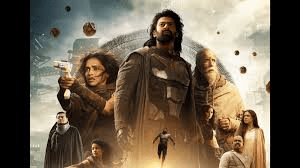Introduction
The kalki story is one of the most vivid tales in Hindu tradition. It is a prophecy about an avatar who ends a dark age. This piece will retell the kalki story in a simple and helpful way. I will use plain words and short sentences. You will get facts, meaning, and gentle reflections. I worked to make the text easy and trustworthy. I also drew on well-known Puranic sources and common scholarly summaries. The kalki story can feel distant or strange. I aim to make it feel useful and close. Read on for the story, traditions, symbol links, and practical lessons. By the end, you can explain the kalki story to a friend or child.
Who is Kalki?
Kalki is described as the tenth and final avatar of Vishnu. In the kalki story, he comes at the end of the Kali Yuga. He arrives when the world needs a strong reset. Scriptures call him a warrior on a white horse. He is shown with a bright sword or discus in some texts. The name “Kalki” points to a churner or one who clears dirt. That fits the idea that he clears corruption. People have long sought to understand his role. Some read him as literal. Others read him as symbolic of renewal. The kalki story blends myth, hope, and moral warning.
Why the Kalki story matters in Hindu belief
The kalki story matters because it closes a long cycle. Hindu thought divides time into yugas or ages. The kalki story promises a turn from decline back to order. For many believers, it is a hopeful message. It says that moral decay will not last forever. It also teaches that actions have consequences. People are urged to follow dharma, or right living. The kalki story supports social and spiritual repair. It also asks communities to stay awake to injustice. For scholars, the kalki story shows how cultures use prophecy. They examine how hope and fear shape public life. The tale stays alive in festivals and sermons alike.
The prophecy and the Puranas
Most of what we know about the kalki story comes from Puranic texts. The Kalki Purana and the Vishnu Purana contain key passages. They describe the setting, birth, and mission of Kalki. The texts place him at the end of Kali Yuga, the age of decline. They show clear images like horse, sword, and city to be saved. These details help singers and artists tell the tale. The Puranas mix exact lines with poetic digressions. They were shaped over centuries. This means versions vary by region and time. Yet the main outline of the kalki story stays stable across versions.
Kalki’s birth and lineage
In many retellings, Kalki is born in a village to a noble family. He grows fast and shows courage early on. Some texts say his father or foster-father is a brahmin or warrior. The kalki story often links him to a pure line and strong training. His birth comes with signs and prophecies. People around him sense that he is different. He trains in arms, wisdom, and leadership. This training readies him to face large threats. The family and village that raise him mirror larger society. Their trust in him prepares him to act when the time is right.
Appearance and weapons
The kalki story paints a striking warrior figure. He rides a white horse and wears radiant armor. He holds a blazing sword or a discus in different versions. The horse and the weapon symbolize speed and justice. The white horse stands for purity and power combined. The sword represents cutting away falsehood and corruption. In art, Kalki is often shown surrounded by light and followers. His image aims to be both fierce and reassuring. That balance helps the kalki story work as both warning and promise. It invites people to choose courage and truth.
Kalki’s mission: ending Kali Yuga
The core of the kalki story is his mission to end Kali Yuga. Kali Yuga is the age of decline in morals and order. The tale says wicked rulers and chaos rise at that time. Kalki appears to defeat those forces and restore dharma. He acts as a purifier and judge. But the kalki story is not only violent. It includes rescue, reform, and a new social order. After his work, texts say a new Satya Yuga will begin. That age is marked by truth, peace, and long life. The narrative thus gives a cyclical hope, not a one-time fix.
Kalki in art, story, and culture
The kalki story appears in paintings, plays, and folk songs. Temple carvings and festival dramas show his arrival and triumph. Folk artists adapt the tale to local lives. In some villages, the kalki story is sung during harvest times. Artists use it to talk about justice and leadership. In modern media, the figure shows up in novels and comics. Creators use the image to discuss politics or moral repair. The kalki story’s flexible imagery makes it easy to retell. That is why it remains present in everyday culture.
Modern interpretations and symbolism
Many modern readers treat the kalki story as symbolic. Some see Kalki as a metaphor for inner change. In this view, the horse and sword are inner powers of will and truth. Others view Kalki as social reform, not a single person. The story then calls for groups to end corruption. Scientists, activists, and spiritual teachers use the kalki story in talks about renewal. They argue that its message is about responsibility and care. My own view is that myth works on many levels. The kalki story can be a literal prophecy for some. For others, it is a call to build a better world now.
Similar savior figures across traditions
The kalki story joins a long list of world savior myths. Many cultures imagine a final reformer or returning hero. Examples include messianic figures in other faiths. These stories share themes of justice, renewal, and hope. Comparing them can help us see common human needs. We want an end to suffering and a fresh start. The kalki story fits into this global menu of hope. Yet it also stays unique with its yuga cycles and ties to Vishnu. Studying such parallels can sharpen our own view of the tale.
Lessons we can learn from the Kalki story
The kalki story teaches several clear lessons. First, it warns that neglect of dharma harms society. Second, it shows hope for renewal, even in dark times. Third, it asks each person to act with small good deeds. The story also teaches the value of leadership that is both firm and fair. Finally, it invites self-reflection: what part of my life needs repair? Reading the kalki story can inspire small, steady change. That is its lasting power. It gives a moral map and a hopeful end point.
How the story is told today
Today, the kalki story is told in many settings. Priests speak of him in sermons and temple classes. Teachers include the tale in school lessons about myth and culture. Authors adapt it into short stories and children’s books. Filmmakers and comic writers offer new twists. Online, many discussion threads debate its meaning. That variety keeps the tale alive and relevant. It also leads to creative mixes of old and new. I have seen local plays that put the kalki story into modern towns. Those shows help people see the myth’s present-day edge.
Personal reflection: why the tale resonates with me
The kalki story has stayed with me because it mixes warning and hope. I grew up hearing many such tales. The image of a bright horse cutting through gloom feels real. I also respect how the tale puts duty and courage together. In my life, small acts of fairness changed situations. That mirrors the kalki story’s call for repair. I have watched neighbors fix a problem through steady effort, not a single hero. This made me see Kalki both as emblem and as a call. The story asks us to act today and grow hope for tomorrow.
FAQs about the Kalki story
Q1: When will Kalki come?
The kalki story does not give a clear modern date. Most texts place him at the end of Kali Yuga. Scholars estimate Kali Yuga lasts hundreds of thousands of years. This makes literal timing hard to pin down. Many believers read the prophecy as a long-term promise. Others see the figure as symbolic and present now as qualities. In short, there is no simple date in the kalki story that fits modern calendars. The message focuses on readiness and moral life, not a countdown.
Q2: Is Kalki the final avatar of Vishnu?
Yes. In traditional lists, Kalki is the tenth avatar of Vishnu. The kalki story places him after avatars like Rama and Krishna. The idea is that Vishnu restores cosmic order when needed. Kalki, as the last avatar, closes the cycle of incarnations in many texts. That is why his arrival marks a major shift. People interpret his finality in many ways. Some see it as the last human-like avatar. Others allow that divine work can take new forms.
Q3: Are there different versions of the kalki story?
Yes. The kalki story appears in multiple Puranas and folk versions. Details such as birthplace, parentage, and exact deeds vary. Regional storytellers add local colors and symbols. The Kalki Purana gives a fuller narrative. The Vishnu Purana and other texts offer briefer notes. This variety is normal in oral and later written traditions. It shows how living stories adapt to new times. The core theme of renewal stays constant across variants.
Q4: Does the kalki story support violence?
The kalki story includes martial imagery and a cleansing battle. Yet many readers note moral limits in the tale. Kalki’s violence is framed as the removal of oppression and injustice. Some modern interpreters stress reform and rescue rather than indiscriminate force. The kalki story invites readers to think about justice and restraint. It is often used to argue for fair and careful action, not for unchecked aggression. The story opens a conversation about how societies should respond to wrongs.
Q5: How can I use the kalki story in daily life?
Use the kalki story as a source of moral inspiration. It asks you to act with courage and truth. Start with small acts like correcting unfairness or helping neighbors. Teach children about honesty and duty through the tale. Use its imagery to spark art, debates, or classroom projects. The kalki story can also prompt community service. The aim is steady repair and not waiting for a miraculous fix. That practical angle keeps the tale useful today.
Q6: Where can I read more about Kalki?
To learn more, look for translations of the Kalki Purana and Vishnu Purana. Many books on Hindu mythology include reliable summaries. Museum catalogues and art books can show Kalki images. Local temple libraries sometimes hold regional tells and songs. Scholarly articles discuss the tale’s history and social roles. Reading a mix of primary texts and modern commentary helps. This approach gives both the kalki story’s text and its many meanings.
Conclusion — What the Kalki story asks of us
The kalki story gives a clear moral map and a hopeful end. It warns about decline. It promises renewal and repair. Most importantly, it asks us to act now, not to wait. We can practice small fairness and stand against cruelty. We can teach children to value truth and service. If you like, share your thoughts about the kalki story with friends. Tell a child the tale in plain words. Read a passage from the Puranas to see the original lines. The kalki story lives because people retell it with purpose. Join that effort and help the next age begin with care and courage.









